Shiva The God of Destruction, Destroyer of Evil, Guardian of the Vedas, A Supreme Hindu deity in existence, Brimming with power, but humble for the most part. Shiva is widely worshipped all over the world, boasting his own group of devoted followers – the Shaivism sect. Father of Lord Ganesha and husband to Parvati, Shiva is a prime example of balance between power, love, intellect and loyalty.
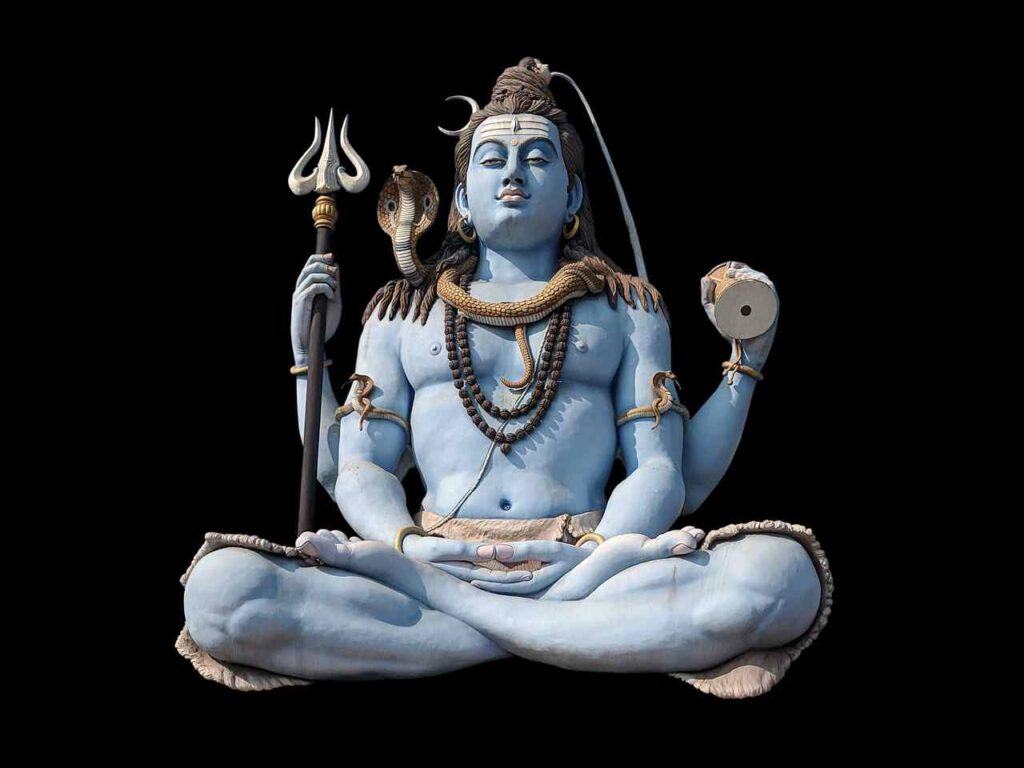
(public Domain)
Who is Lord Shiva?
Lord Shiva (also known as shiv, Shankar) Supreme Hindu Deity, Shiva is one of the Hindu Triumvirate – a trio consisting of the most powerful gods in existence – Brahma the Creator, Vishnu the Preserver and Shiva the Destroyer. Brahma’s role is to create all life in the Universe, Vishnu’s to preserve it, and Shiva’s role is to destroy the universe to recreate it all over again.
An unconventional God, Shiva is not characteristically ‘Good’ or ‘Evil’ but is a perfect balance of both. On one side, Shiva acts as a protector and a benevolent God, but on the other side, is the supreme commander of evil – ghosts, demons, thieves and villains.
Although Shiva is referred to as the ‘Destroyer’, he plays a vital role in creation as well. According to Hindu mythology, the universe exists in a cycle. Every 2,160,000,000 years, the universe needs to regenerate to continue, and Shiva assists this process by destroying the existing universe to allow for the creation of the new one.
In an interesting take, Shiva’s nature as destroyer and harbinger of creation is demonstrated in the story of his son-Ganesha, ‘When Shiva resurrected Ganesha from death’.This is a classic example of Shiva’s identity and message – The destruction of one thing, to pave the way for the creation of something greater.
Another example that depicts the complexity of Shiva’s character is the way he switches from asceticism to hedonism depending upon his mood. Although he is widely considered as an ascetic who takes pleasure in long meditation retreats to the mountains by himself, he also has a notably loving and passionate relationship with his wife Parvati, which contradicts his otherwise ascetic nature.
However, his relationship with Parvati brings balance to his life – allowing him to maintain his sage-like characteristics while maintaining a romantic relationship that is strictly bound by marriage.
Epithets: Popular Names Of Lord Shiva
Lord Shiva is known by a plethora of names that depict many of his different qualities. The name Shiva in itself is derived from an ancient Sanskrit word that translates to ‘The auspicious one’. Among other names, Shiva is also known by the names Mahadeva, Mahakal, Bholenath, Shambo, Neelakanta, Natraj, Hara, Rudra, Maheshwara, Shankar and so on.
- Mahadeva
Shiva is widely known as ‘Mahadeva’, which directly translates to ‘The Greatest God’ or the ‘Lord of Gods’. Shiva achieved this title as he is considered the greatest of all Gods, even being worshipped by the other Gods of the triumvirate-Vishnu and Brahma. Unlike other Gods, Shiva is the only being that is unaffected by karma or curses and is beyond time and space, never experiencing birth or death.
- Maheshwara
For the devotees of Shaivism, Shiva is considered ‘Maheshwara’ or ‘Supreme Being of the Universe’.
- Mahakal
Mahakal which translates to ‘Greater than Time’. Lord Shiva has transcended both death and time, There is nothing beyond him, no element no dimensions not even time (Kaal), He is indeed The lord of time.
- Nataraja
Nataraj or ‘Shiva Nataraja’ is one of Shiva’s most famous identities, and it translates to ‘The Lord of Dance’. Shiva is often represented in art in the form of ‘Shiva Nataraja’ performing the ‘Tandava’, a cosmic dance that is said to lead to the creation and destruction of the universe.
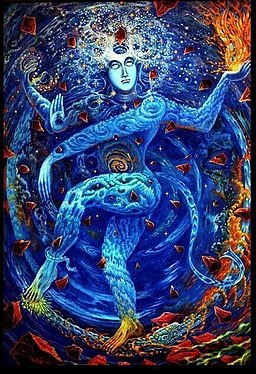
(Public domain)
- Neelakanta
Neelakanta directly translates to ‘Blue Neck’ and was the result of Shiva consuming a deadly poison.
- Bholenath
(Sanskrit: भोलेनाथ, Bhōlēnātha) Translation of this name is a Lord (nātha) of simplicity and simple people (bhōlē). Lord Shiva got his name ‘ Bholenath’ because he is easily pleased and showers his blessings on his devotees without any complex rituals, he gives shelter to any devotee with sincere devotion and a clean heart.
Origin of Lord Shiva
There are legends galore of how Shiva came to be, some depicting evolution of a lesser God to the all-powerful supreme being he is now, and some stating that Shiva never “came to be”, but rather “always has been”.
A common myth surrounding Shiva’s origin is the story of the storm God Rudra. In the Indus Valley during the Vedic period, The Lord of Beginnings and his wife Usha were two of the most powerful Vedic deities that were commonly worshipped. They gave birth to their son Rudra, a powerful storm God. Rudra directly translates to ‘Howler’, a testament to his immense powers as a Storm God. Legend says that over time, Rudra evolved into what we know today as Lord Shiva.
According to another legend, it was Brahma and Vishnu who discovered the existence of Lord Shiva. It is said that an argument between the God of creation and the God of Preservation set into motion the birth of Lord Shiva. On one particular day, Brahma and Vishnu were engrossed in a verbal altercation as to who is the more superior being.
Mid-argument, a blazing pillar appeared in front of them, accompanied by an Oracle. A challenge was posed to the Gods – Find the beginning or the end of the pillar first to claim the title of most superior.
The Gods immediately set off to dominate the challenge – Brahma turning himself into a goose and flying upward to find the top of the pole, and Vishnu turning himself into a Mole and digging into the earth to find the bottom. However, their efforts were fruitless, as neither of them was able to succeed. Once they yielded, Lord Shiva appeared in front of them. To their surprise, it was revealed that Shiva has always been the supreme ruler of the universe, and the never-ending blazing pillar symbolized the eternality of Lord Shiva.
However, according to most sources, Shiva is all-powerful and exists beyond our human understanding of time and space. It is believed that Shiva never had a ‘Birth-Cycle’ and always existed, even before the creation of time and space, making him the oldest God in existence. Shiva is referred to as a Sayambu – not born from a human, but rather a manifestation of divinity and celestial power. Shiva existed before the first creation and will exist long after the destruction of the cosmos.
Iconography: What does Lord Shiva Look Like?
Unlike other gods which are depicted in lavish surroundings, Shiva is dressed in simple tiger skin and in grim settings usually in a yogic position, Even though Shiva is the destroyer god, he is usually portrayed as smiling and tranquil.
Shiva is often manifested in three forms – a purely male form, a half male- half female form where Shiva is together with his consort Parvati and as a phallic statue – Shiva Lingam.
- Shiva’s Male Form
In his male form, Shiva is depicted as having a blue Neck (Holds Poison in his throat) and a white body smeared with the ashes of corpses all over himself, wearing tiger skin and a cobra snake necklace, carrying a trident and the only god in the Hindu pantheon with a third eye which he uses for the destruction of the universe.
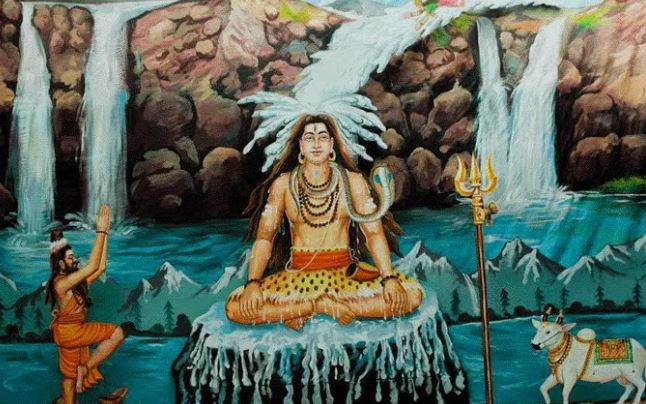
(Public domain)
- Shiva’s Third Eye
Shiva is depicted with a third eye also called the Ajna Chakra in the centre of his forehead; hence he is often referred to as Tryambaka Deva (literally meaning “three-eyed lord”). Shiva’s third eye is considered to be the source of ultimate power and destruction and represents the anger, futility of overwhelming emotions and vengeance. It is believed that Lord Shiva has opened his third eye only four times.
- Shiva’s Trident
Shiva is generally seen to be holding a Trishula (Sanskrit: trident) in most representations of him in art and history. The trident consists of three prongs, each prong signifying the different powers of the triumvirate God’s – creation, preservation and destruction.
- Shiva’s Hair
Shiva has always been depicted with Matted, ragged hair. He is often referred to as ‘Jatadhara’ which directly translates to ‘A heap of matted hair’.The flow of his hair represents the wind, giving life to all living beings. His hair is also popularly believed to be the source of the Ganges
- Shiva’s Cobra Necklace
Snakes are a symbol of danger and poison. Wearing a cobra on his neck is a show of strength, as it proves that Shiva has the power over all the dangerous and venomous beings in the universe.
- Shiva’s Vibhuti
Shiva is depicted with three lines drawn horizontally across the forehead in white ash called ‘vibhuti’ representing Shiva’s all-pervading nature, his superhuman power and wealth. Members of Shaivism often draw vibhuti lines across their forehead honouring Shiva.
- Ardhanarishvara: Shiva’s Gender-Fluid Form
Shiva is depicted in many Indian and Southeast Asian sculptures as both male and female and this form is known as Ardhanarishvara (Sanskrit: “Lord Who Is Half Woman”). Half of his body is pictured as his male form, while the other half is pictured as Parvati. The symbolism behind this representation can be interpreted in two ways – Shiva considered his wife Parvati his ‘Other Half’ or his eternal wife, and therefore she became a part of him, or that Shiva is beyond the human constructs of gender and society, and therefore has no particular gender.
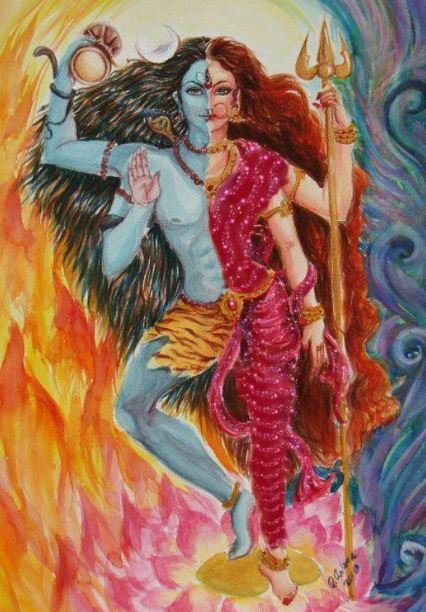
(Public domain)
- The Shiva-Lingam
A popular representation of Shiva is in the form of the Shiva-lingam. The Shivling is a phallic-shaped statue and is widely considered to be a symbol of Shiva’s masculinity and power, and is accepted as a physical form of the cosmos and its ruler.
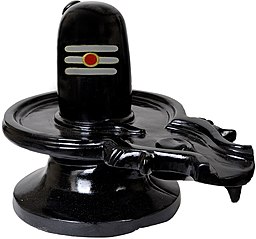
(Public domain)
Other interpretations of the Shivling say that it is a symbol of acceptance and life after death, and it gives one the strength to deal with the death of someone close. It is also said to represent that the body is a temple, and Shiva is the force that resides within all beings.
Lord Shiva’s Marriages
According to Shiva Purana, Lord Shiva was a hermit and a fierce ascetic who never fancied Marriage, but Vishnu and Bhrama were worried “If he did not get married, gradually his energy and his vibrations will influence the whole world and then everyone will become ascetic”, But After much coaxing and cajoling, they Got him married to Sati.
Shiva and Sati
Initially, Lord Shiva was married to Sati, granddaughter of Vishnu. Shiva and Sati lived a happily married life in Mount Kailash, very much in love. Sati’s father Daksha, however, was disapproving of Shiva and began to plot against their marriage. One day, he invited Sati to a sacrificial ceremony, where he began insulting Shiva in front of his guests. Enraged and unwilling to hear any more abuse, Sati summoned a sacrificial fire, and threw herself into it, losing her life. The death of Sati led Shiva into a state of deep anguish, causing him to retreat into the mountains to meditate unwaveringly, for over a thousand years.
Shiva and Parvati
In the meantime, Sati was reincarnated as a young girl by the name of Parvati. Feeling a strong sense of attraction towards Lord Shiva ever since she was a young girl, as soon as she came of age, Parvati immediately retreated to the Himalayas to impress Lord Shiva with her devotion. Unconvinced at first, Shiva rejected her proposal, to the dismay of the Gods. Thus, they sent Lord Kamadeva, God of Love, to encourage feelings for Parvati within Shiva. However, when struck by Kamadeva’s arrow, Shiva opened his third eye, killing Kamadeva, but falling in love with Parvati. On realizing that it was Kamadeva’s arrow that caused his feelings, he banished Parvati, intending to never see her again.
Soon after, Parvati began to realize that she is in fact, the reincarnation of Sati. Shiva too seemed to sense this and decided to test her. When he confirmed that Parvati was Sati reincarnated, they fell in love and got married. Parvati soon went on to become his eternal wife and other-half, with whom he bore two sons – Ganesha and Karthikeya.
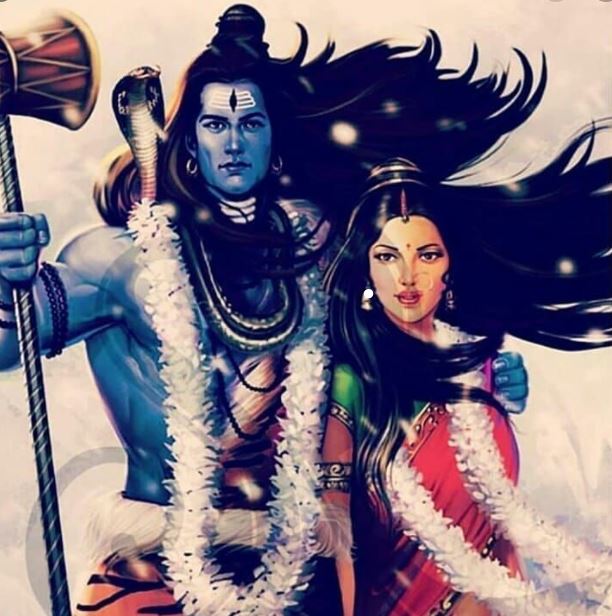
(Public domain)
The Significance of Lord Shiva in Hinduism
Shiva is considered to be the most powerful god in the Hindu triumvirate and is known as the Patron of Brahmins and yogis, The keeper of the Vedas, and The destroyer of the universe. Shiva is considered to be the greatest God in Hinduism, as he is believed to be the oldest God, preceding Vishnu and Brahma. Devotees worship Shiva to bring peace, wealth and prosperity to their lives.
Shiva is also a representation of ‘Tamas’, the essence of the living body. It is believed that to achieve true liberation and control over one’s body, Shiva’s name is invoked to destroy the impurities residing deep within your soul.
According to his devotees, Shiva has earned the title of ‘The Destroyer of Evil’ as he is responsible for destroying dilapidating human faults such as – ego, delusion, pride and attachment.
Monday is traditionally celebrated as the day of Shiva, and devotees spend the day worshipping him and his wife Parvati. On this day, devotees visit the temple of Shiva and bathe the Shiva Lingam with milk and gangajal to invoke Shiva and pray to him for health and prosperity.
Shiva is also worshipped by a sect known as the Shaivism sect, in which he is considered the supreme being or deity. It is a sect within Hinduism and is considered to be one of the world’s oldest religions. Devotees consider Shiva to be a manifestation of the entire universe and fondly call him ‘Maheshwar’, the supreme being of the universe.
The Shiv Purana
The Shiv Purana is one out of the 18 Sanskrit ‘Puranas’ or ancient religious texts, that is centred around Shiva and his consort Parvati. It exists in the form of books, ranging from seven books in South India to two books in the Bengal region. The Shiv Chalisa is adapted from the Shiv Purana, consisting of 40 verses.
The Shiv Purana further deals with the topics of mythology, celestial relationships, cosmology, yoga, rivers, ethics and geography.
How is Lord Shiva Celebrated?
For devotees of Shiva, ‘Mahashivratri’ or ‘The great night of Shiva’ is the most important night of the year. It is celebrated once a year. The night of Mahashivratri is also considered to be the night that Shiva performs his heavenly dance.
The major traditions of Mahashivratri include fasting, chanting of prayers, meditation, and reciting stories depicting virtues such as honesty, kindness, benevolence, charity and forgiveness – all intrinsic virtues of Lord Shiva. It also includes all-night vigils at temples, chanting to Lord Shiva. The Shiv Chalisa is recited all night long.
During Mahashivratri, the Shiva-Lingam is worshipped as a physical form of Lord Shiva and is celebrated and bathed with milk, honey and Shiva’s favourite flowers – AAKAMDA, DHATURA, LOTUS, BELA PATRA. The main aim of the festival is to celebrate the overcoming of ignorance and darkness in the universe.
Legacy
The ultimate balance between good and evil, asceticism and hedonism, The all-powerful Destroyer and The harbinger of a better existence, Lord Shiva has had a paramount influence on history and culture as we know it. Older than time itself, Lord Shiva teaches us that fear and worldly pleasures are temporary, and evil must not be tolerated and materialism isn’t eternal. One must love your other half just as Shiva loves Parvati, and must always strive to fight for what is true, and only then can we achieve true peace.


